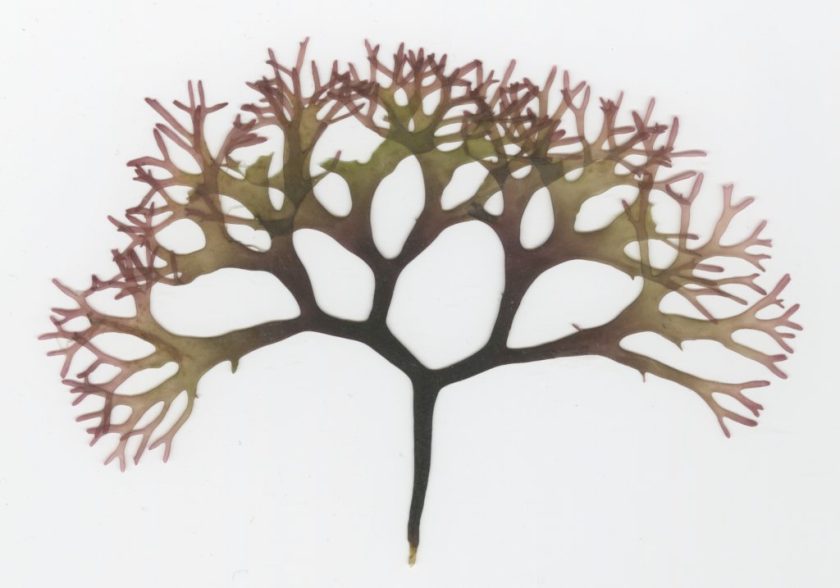Swak! The ocean waves crash around your legs, leaving a slimy green thing clinging to your ankle. Another day at the beach, another piece of seaweed.
Before you toss it back into the retreating surf, take a closer look. That’s what Drexel University students in Professor Rick McCourt’s Pennoni Honors College class did this spring.
The class was “Ocean to Table: Marine Plant Biodiversity and Ecology,” and it covered the ecology and human uses of seaweeds and sea grasses. Using seaweeds collected in Rhode Island and California, the class identified and compared the species from each area.

Inspired by artist Josie Iselin’s book, “An Ocean Garden, The Secret Life of Seaweeds,” McCourt’s students used her technique of putting fresh, wet seaweeds on flatbed scanners and making high quality images of them shown here.
Did you know that seaweed extracts are in many everyday products that we eat or use? That includes ice cream, toothpaste, cosmetics, and dental molds, according to McCourt, PhD, who is the Academy of Natural Sciences’ associate botany curator and director of the Center for Systematic Biology and Evolution. He is a professor in Drexel’s College of Arts and Sciences, Department of Biodiversity, Earth and Environmental Science.
“More and more seaweed is appearing as a main or side dish on menus and not just in Asian restaurants,” McCourt said. “The seaweed wrap around that sushi roll in your plate is a red seaweed that is cultivated commercially. Seaweeds are the new superfood.”

Besides their value as food and an ingredient in products, seaweeds are sometimes touted as “carbon sinks” because they grow very rapidly in salt water (think the giant oceans) and absorb carbon dioxide. The release of carbon dioxide into the atmosphere through human activities, such as burning of fossil fuels for electricity and transportation, is a leading cause of global warming.
“Seaweeds are sustainable crops with great potential in combatting the effects of climate change,” McCourt said. “Plus they’re lovely to look at.”
There are about 20,000 species of seaweeds known to science, but scientists believe there are many more yet to be discovered.
“This counts only the larger ‘seaweed’ types of algae. If you include microscopic forms there are more than 72,000,” McCourt said. “There are far fewer seagrasses—about 72.” But who’s counting?

Right about now you may be asking yourself: what’s the difference between seaweeds and seagrasses? After all, we can usually distinguish a weed from a grass in our yard.
Seaweeds are algae, mainly brown, green, and red algae, that live in the ocean. They can be tiny turfs to huge kelps the size of trees. The three groups are distantly related, especially the browns, which are far from the red and green seaweeds on the tree of life.
Seagrasses are flowering plants that are abundant in some areas, but there are not many species. They produce flowers and fruits, but like grasses on land, their reproductive structures are small and less conspicuous than other plants that produce showy flowers with large petals and fruits.
Seagrasses are harvested less often, but they play a big role in coastal ecosystems. They provide habitat for animals, stabilize the substrates they grow on with their roots and rhizomes, and provide food for some animals such as sea turtles.

Post by Carolyn Belardo

